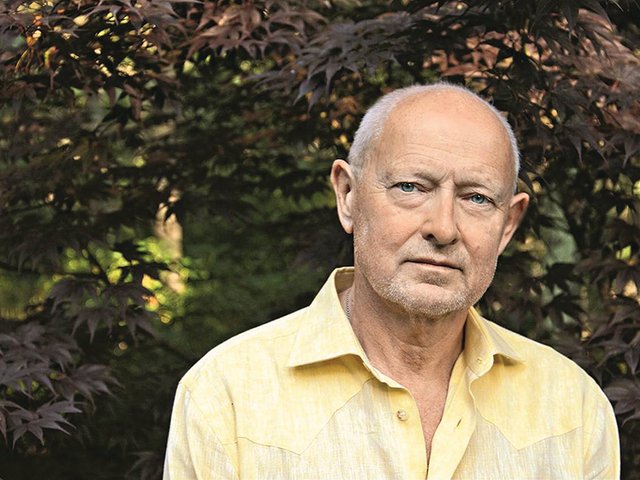The seasoned art dealer Michael Findlay’s brash and irreverent memoir of his life as an upstart in New York City during the swinging 1960s is a kind of Barry Lyndon tale, rich in anecdotes about the early and innocent days of SoHo as a budding art district.
Findlay was hired on a whim by the wealthy uptown art dealer Richard L. Feigen (1930-2021), giving the Scottish-born recent émigré, at the age of 18, a remarkably lucky leg up into that world. “Michael did some historic things down there [in SoHo], including the first American show of Joseph Beuys, the first New York representation of John Baldessari, an exhibition of Frank Lloyd Wright windows and drawings… and soon it was a lively place,” wrote Feigen in his own memoir, Tales from the Art Crypt (Knopf 2000).
While Feigen brokered deals uptown in his Hans Hollein retrofitted townhouse on East 79th Street, Findlay was dispatched downtown to run Feigen’s 141 Greene Street gallery, arguably the first art gallery to emerge, in October 1968, in the then wild and woolly, truck-laden, cobblestoned streets of SoHo.
In the months before Findlay scored his entry-level position, he wrote concrete poetry—where the meaning or effect is conveyed partly or wholly by visual means using patterns, words, letters or other typographical devices—and was even published in Timothy Baum’s avant-garde Nadada magazine, as well as auditioning for theatre roles.
Black-and-white photographs that drizzle on pages throughout this memoir show Findlay with his Beatle haircut and waifish Carnaby Street togs, resembling David Hemmings’s character Thomas in the 1966 film Blow-Up. One such image from the Artgallery magazine in December 1969 and captioned “Downtown avifauna” featured the dealers Max Hutchinson, David Whitney, Ivan Karp, the author, Stephen Radich and Paula Cooper, all posed on a playground jungle gym.
A benefit of my lack of formal education was that I had no hard-and-fast principles about what art should be
Before Findlay fell into that exclusive and downright pioneering fraternity, as he writes, “There was always a spare bar stool for a not-quite penniless poet or actor-to-be to perch on and soak up the high-toned squalor.” Bars, downtown nightlife and serial romance play a supporting role in the memoir, especially the nightclub and restaurant Max’s Kansas City run by Mickey Ruskin, who swapped free bar tabs in exchange for artworks by the percolating art stars Donald Judd, Dan Flavin, John Chamberlain, Carl Andre and scene-maker Andy Warhol.
A self-taught expert
Though admittedly untrained in art history or, for that matter, business sense, Findlay has some artist bona fides through a maternal great uncle, Daniel James Duffy (1848-1945), who was a member of the Royal Scottish Academy. Findlay recounts a life-altering moment at the age of seven in 1952 when his mother took him to the Kelvingrove Art Gallery and Museum in Glasgow, where he encountered Salvador Dali’s Surrealist masterpiece Christ of Saint John of the Cross (1951).
“A benefit to my lack of formal art education,” Findlay observes, “was that I had no hard-and-fast principles about what art should or should not be. I simply accepted and enjoyed what was on offer based on whether or not it engaged me.” This unfettered mindset seemingly gave him the chutzpah to take on and exhibit the work of the then unheralded Conceptual artist Baldessari, as noted by Feigen, when the lanky Californian made a cold call to the gallery with slides of his otherwise unadorned word paintings.
Around the same time as Feigen staged a solo presentation of 50 Claude Monet paintings uptown in October 1969, Findlay showcased Hannah Wilke’s arcade of ceramic vaginas at Feigen’s gallery downtown.
Readers are constantly tested by a tsunami of past and sometimes glorious names peppered throughout Findlay’s chronicle, before fleeing for answers on Google: from the taxicab mogul and Pop Art collector Robert Scull and the cutting-edge Museum of Modern Art curator Kynaston McShine to the art critic Hilton Kramer, who, the author tags, “visited galleries with the enthusiasm of a hypochondriac in a leper colony”.
Findlay amicably parted ways with Feigen and in late 1971 opened his own SoHo space under the name J.H. Duffy & Sons, in honour of his maternal grandfather and funded by a $4,000 infusion loan from the film producer and collector Keith Barish. In a modest mailer sent out to potential clients at the time, Findlay wrote: “We believe that patient and discreet consultation between the collector and the dealer is the key to successful art buying.”
The gallery ran on a shoestring until 1977, pushed out in part by rising rent and yet, among other laurels, gave the first US solo show of Sean Scully’s dark-hued abstractions, though the only sales consisted of Findlay buying two paintings.
Though Findlay continues to work as a director of the blue-chip Acquavella Galleries in Manhattan and, before that, for decades as a top-class Impressionist and Modern specialist at Christie’s New York, his take on the current state of the art market, in contrast to those bygone days, is decidedly critical—with lines such as “a far cry from the monetized, high-stakes glamor swamp it would morph into in the twenty-first century”.
• Michael Findlay, Portrait of the Art Dealer as a Young Man: New York in the Sixties, Prestel, 228pp, 56 b/w illustrations, £24.99/$35, published 3 September
• Judd Tully is an art critic, journalist and regular contributor to The Art Newspaper




